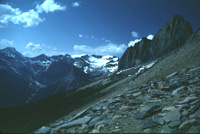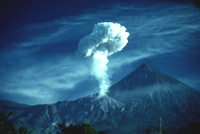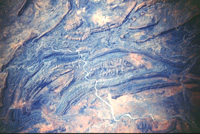
The department has a major research program in hydrogeology and groundwater engineering, covering a range of topics from subsurface flow and contaminant transport to groundwater protection, remediation, and supply. This research encompasses both computer-modeling and physical experiments which range from small-scale process studies to field-scale demonstrations. Our academic setting allows students to scientifically define a problem and apply engineering principles to solve it.

An equally active research program exists in low-temperature aqueous geochemistry, diagenesis, and water-rock interactions. This program involves groundwater chemistry in geohydrology, as well as petroleum engineering, geothermal systems, hydrothermal systems, and basin brine evolution and movement. The activities include field, laboratory, and computational studies, and many projects involve very closeinteraction with industry.

A variety of studies are currently directed to applications within the oil and gas industry. For example, the use of horizontal drilling to rejuvenate production from abandoned fields in Michigan was recently proven to be successful, while new methods of visualization for reservoir characterization are being developed using widely available software. Well-logging, petrophysics, and wellbore stability represent other resource-related fields of study and research. Active research in earthquakes is combined with petroleum engineering to study induced seismicity worldwide.

Research in sedimentology and basin evolution ranges from investigations into specific sedimentological and paleoenvironmental settings to large-scale studies of physical models of basin evolution, sediment transport, and petroleum generation. Basin research includes thermal, tectonic, and synthetic stratigraphic models. Sedimentologic research emphasizes physical processes, sequence stratigraphy, petrographic and X-ray techniques. Again, interaction with industry is extensive.

Studies of active and ancient volcanoes are another of the department's research priorities. This work, which has taken students all over the world, has evolved from a program that was mainly petrologic to one that includes investigations into volcanic hazards, the interaction of volcanoes, the atmosphere and climate, and even problems of mineral beneficiation in the lunar gravity field! These problems involve a variety of techniques not normally used by geologists--including spectroscopic methods, remote sensing, and high-temperature gas sampling, as well as experimental investigations that range from solidification studies in magmas to flume studies in the investigation of volcanic debris flows.
All of the above research areas are impacted by a very rapidly growing research program in image analysis and remote sensing. This work ranges from satellite imagery and geographic information systems all the way to petrographic image processing and visualization of one- and two-phase fluid flow in porous rocks. It has involved tracking volcanic eruption plumes and forecasting fallout patterns, identification of glacial features and determination of ice movements, investigation of contaminant plumes in lakes and streams, and regional determination of water
resources. Again the emphasis is on multidisciplinary investigations in which traditional boundaries between fields are blurred.

The research areas of structural geology and tectonics, both very field intensive, range from microstructural investigations of the development of foliation and transposed layering to tectonic investigations of plate movements utilizing paleomagnetic techniques. Laboratory strain experiments and borehole stress measurements have been carried out, as have engineering applications of rock mechanics. The techniques of modern structural geology have been applied to a large number of field areas.
This department has long been noted for its valuable contributions to hardrock geology and, in particular, Precambrian geology, mineralogy, and mineral deposits. That tradition has continued to the present in a very active research program in Precambrian regional geology and the genesis of hydrothermal ore deposits. Research has expanded to involve alteration in active geothermal systems, as well as fluid-rock interactions in a variety of rock types. The very active aqueous geochemistry research program has significantly strengthened the hardrock research program.
Research in geophysics also covers a variety of areas with an emphasis on applied geophysics. A very active program exists in electromagnetic and magnetotelluric geophysics, including signal analysis, instrumentation development, numerical modeling, and microcomputer applications in the field. This program interfaces directly with the sensing and signal-processing engineering nondepartmental program. Recent work includes applications of ground penetrating radar to engineering and groundwater problems. Research is also very active in the areas of paleomagnetics and rock magnetism, with projects being carried out worldwide to investigate lithospheric plate movements, magnetic field behavior, the effects of alteration on rock magnetism, and environmental applications of rock magnetic properties. In addition, research continues in the areas of engineering seismology.

these are some of the crossdisciplinary linkages we have on campus:
Keweenaw Interdisciplinary Transport Experiment in Superior (KITES)